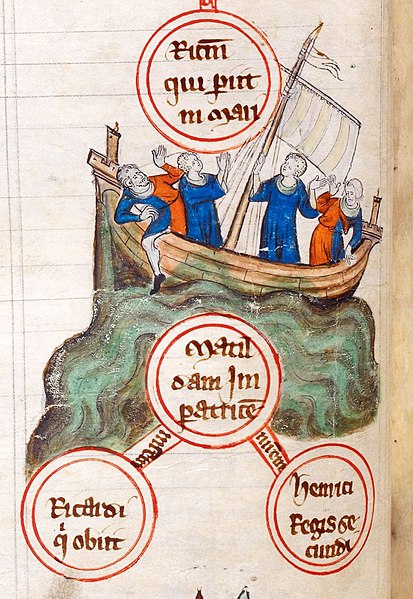The Charter of Liberties, also called the Coronation Charter, or Statutes of the Realm, was a written proclamation by Henry I of England, issued upon his accession to the throne in 1100. It sought to bind the King to certain laws regarding the treatment of nobles, church officials, and individuals. The nineteenth-century historians Frederick Maitland and Frederick Pollock considered it a landmark document in English legal history and a forerunner of Magna Carta.
Henry I of England was forced to make concessions to the barons in the Charter of Liberties when he assumed the throne in 1100.
The Charter was issued from the Norman Chapel in the Tower of London in 1100.[citation needed]
William II of England was killed in a hunting accident, allowing his brother, Henry I of England to assume the throne in 1100.
The sinking of the White Ship in 1120, drowning Henry's heir, William, effectively marked the end of the Norman era in England.
Henry I, also known as Henry Beauclerc, was King of England from 1100 to his death in 1135. He was the fourth son of William the Conqueror and was educated in Latin and the liberal arts. On William's death in 1087, Henry's elder brothers Robert Curthose and William Rufus inherited Normandy and England, respectively, but Henry was left landless. He purchased the County of Cotentin in western Normandy from Robert, but his brothers deposed him in 1091. He gradually rebuilt his power base in the Cotentin and allied himself with William Rufus against Robert.
Miniature from Matthew Paris's Historia Anglorum, c. 1253. The portrait is generic and depicts Henry holding the Church of Reading Abbey, where he was buried.
13th-century depiction of Henry
Mont Saint-Michel in Normandy, site of the 1091 siege
Henry's first wife, Matilda of Scotland


![The Charter was issued from the Norman Chapel in the Tower of London in 1100.[citation needed]](https://upload.wikimedia.org/wikipedia/commons/thumb/b/bf/Whitetowerchapel.jpg/640px-Whitetowerchapel.jpg)




